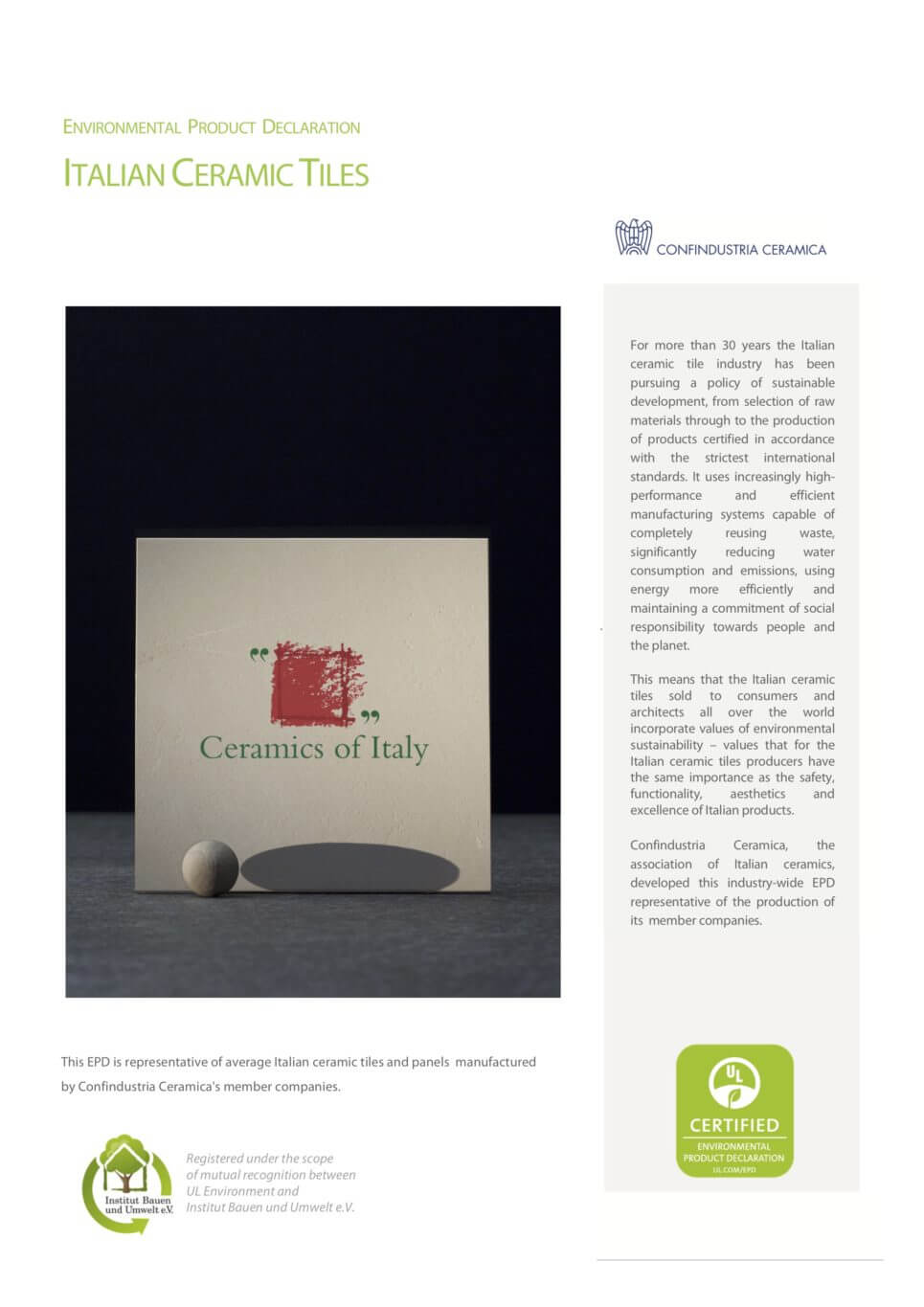A twelve page industry-wide report, certified by UL Environment, representative of average ceramic tiles and panels manufactured by Confindustria Ceramica’s member companies.
The ceramic tile industry in Italy has been working toward sustainable development for more than 30 years. Initiatives include:
- Reusing waste
- Reducing water consumption
- Reducing emissions
- Energy-efficiency
- Social responsibility
The association of Italian ceramics, Confindustria Ceramica, compiled this 12-page Environmental Product Declaration (EPD) report about the production of ceramic tiles and panels by its member companies.
Confindustria Ceramica’s ceramic tiles are primarily shaped by dry pressing, using raw materials like sand, clay, feldspar and kaolin to develop the porcelain stoneware. The raw materials for tile are 42 percent clay, 35 percent feldspar, 13 percent sand and 4 percent rhyolite. Components of the glaze used for ceramic tile are clay powder, quartz, alumina, natural pigments, and frits.
The manufacturing process for these tiles is as follows:
- Storage of raw materials
- Grinding
- Atomization
- Pressing and drying
- Glazing
- Firing
- Squaring and packaging
These tiles are used for both floor and wall coverings – both external and internal as well as residential and commercial applications. The EPD discusses the product in more detail, including the constructional data about color, tactility, surface quality, and more. There’s a chart listing different values for water absorption, shock resistance, and its resistance levels for a variety of other factors.
After outlining the composition and manufacturing process for ceramic tiles, the EPD discusses the environmental impacts of manufacturing, packaging, installing and living with ceramic tile. It provides transportation, installation and maintenance scenarios as well as additional technical information, then reports the results of the study with respect to environmental impact, resource use, and output flows and waste categories.

